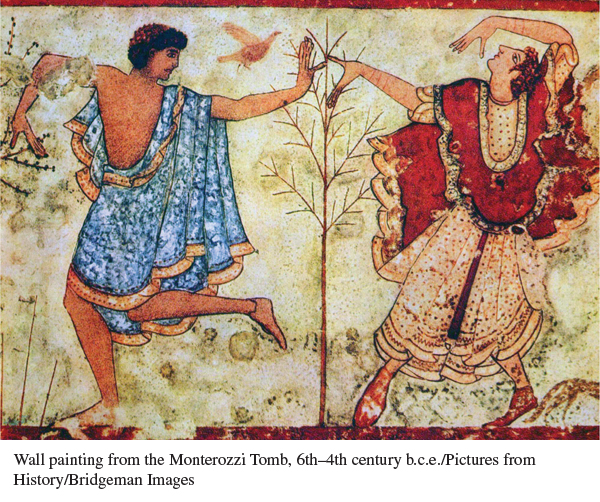A History of Western Society: Printed Page 120
A History of Western Society, Value Edition: Printed Page 113
A History of Western Society, Concise Edition: Printed Page 121
Introduction for Chapter 5
5
The Rise of Rome
ca. 1000–27 B.C.E.
The Hellenistic monarchies that arose after Alexander’s conquests extended eastward and southward from Greece. The Greek colonies that had been established in southern Italy were not part of these monarchies, but culturally they became part of the Hellenistic world. To the north of the Greek city-
Roman history is generally divided into three periods: the monarchical period, traditionally dated from 753 B.C.E. to 509 B.C.E., in which the city of Rome was ruled by kings; the republic, traditionally dated from 509 B.C.E. to 27 B.C.E., in which it was ruled by the Senate and expanded its power first to all of Italy and then beyond; and the empire, from 27 B.C.E. to 476 C.E., in which the vast Roman territories were ruled by an emperor. This chapter covers the first two of these periods. The Roman Empire will be discussed in Chapters 6 and 7.▪

CHAPTER PREVIEW
How did the Romans become the dominant power in Italy?
What were the key institutions of the Roman Republic?
How did the Romans take control of the Mediterranean world?
How did expansion affect Roman society and culture?
What led to the fall of the Roman Republic?
Chronology
| ca. 1000 B.C.E. | Earliest settlements in the area that became the city of Rome |
| 753 B.C.E. | Traditional founding of the city of Rome |
| 509 B.C.E. | Traditional date of establishment of the Roman Republic |
| 451–449 B.C.E. | Laws of the Twelve Tables written and issued |
| 387 B.C.E. | Gauls sack Rome |
| 367 B.C.E. | Licinian- |
| ca. 265 B.C.E. | Romans control most of Italy |
| 264–201; 149–146 B.C.E. | Punic Wars |
| 133–121 B.C.E. | Reforms of the Gracchi |
| 107–31 B.C.E. | Turmoil in the late republic |
| 44 B.C.E. | Julius Caesar assassinated |
| 31 B.C.E. | Octavian defeats Antony and Cleopatra at the Battle of Actium |
| 27 B.C.E. | Senate issues decrees giving Octavian great power |